|
McCloud River Railroad:
Loading Logs at the Landing |
|
|
|
The location at which logs would be gathered is known in the logging industry at the Landing. The processes and technologies McCloud used to get logs from the stump to the landing are detailed in the Logging the McCloud Woods segment of this section. This page will deal with the various technologies employed to lift the logs onto flatcars. |
|
|
|
Parbuckling was the method the McCloud companies used to load logs for the first decade or so of the operations. Logs and/or timbers would be placed against the side of the log flat to form a ramp. Horses or donkey
engines would then roll logs up the ramp and onto the log flat. |
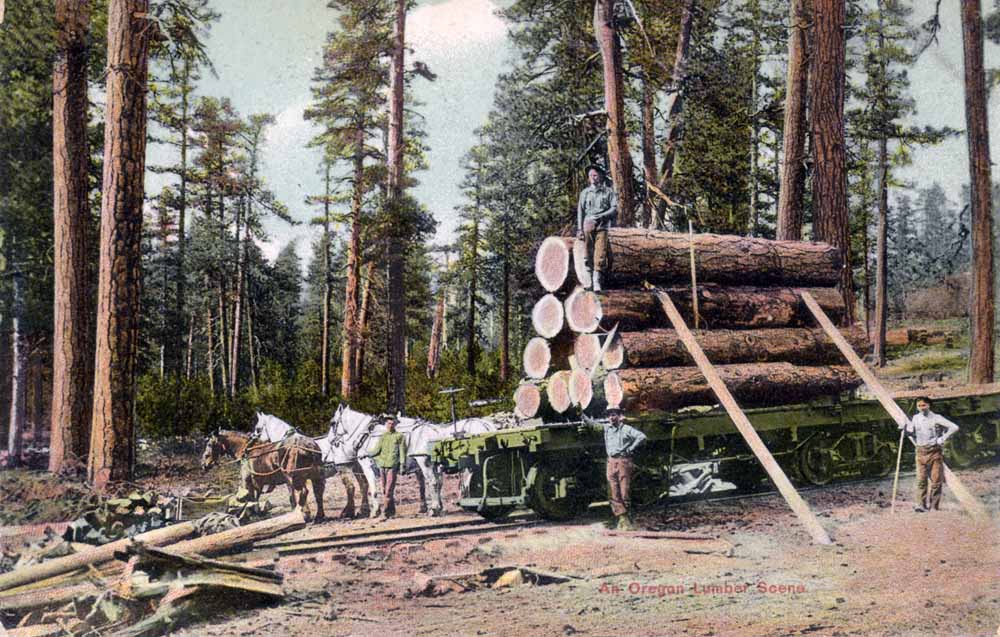 |
|
This colorized postcard appears to be from the McCloud operations and illustrates parbuckling logs using horses. Jeff Moore collection. |
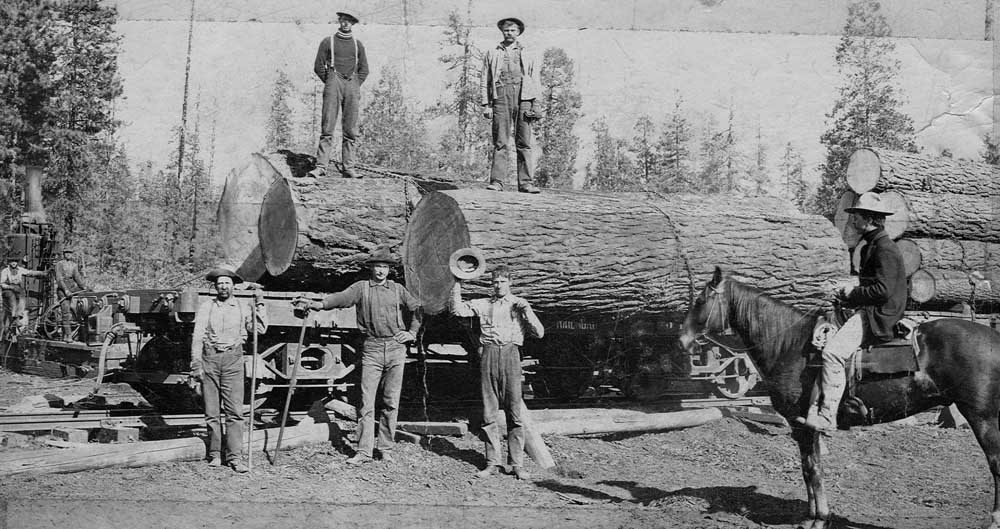 |
|
Parbuckling logs with a steam donkey. Heritage Junction Museum. |
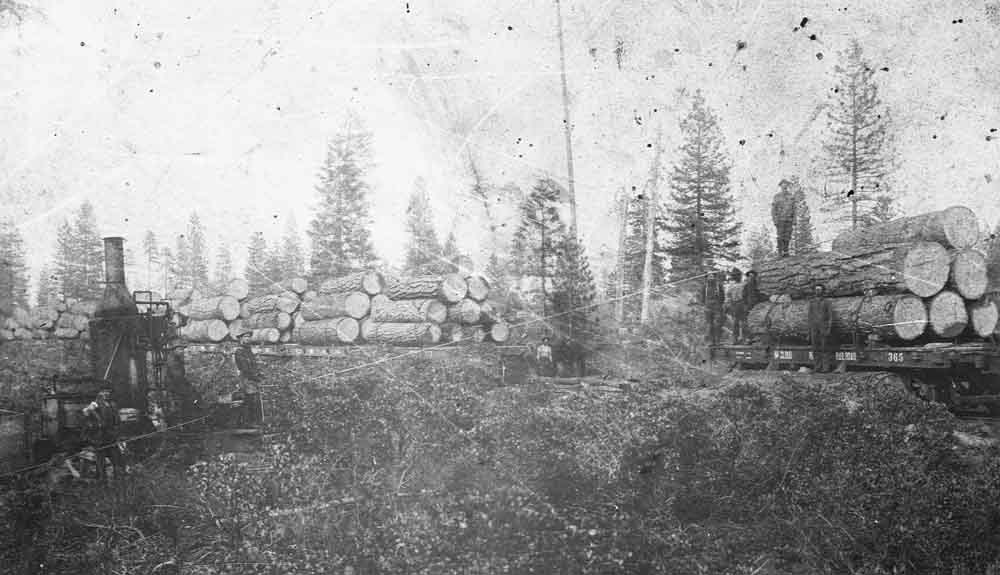 |
|
Another early photo of a steam donkey parbuckling logs. Heritage Junction Museum. |
|
|
|
McGiffert Loaders- As related in the Equipment section of this website, John R. McGiffert invented the loader bearing his name shortly after 1900. The McGiffert
loader straddled the tracks when in use, with the frame resting on the ties outside the rails. The frame opened like a tunnel over the tracks so that empty log cars could pass underneath the machine.
An upright boiler and hoisting mechanisms were on a platform above the frame, with the cables run through an A-frame boom off one end of the loader. Logs would be brought alongside the tracks next to
the boom, where the loader would lift them onto the flatcars. The loaders had eight flanged wheels and a chain driven mechanism that allowed them to move themselves, and the wheels would be tucked up
against the bottom of the platform when in use. The McCloud companies are known to have owned six McGiffert loaders and used them in two distinct eras, spanning from 1907 to the early 1920s when the
donkey loaders profiled below took over all loading duties, and then from around 1927 at the start of tractor logging until the end of the rail logging era. |
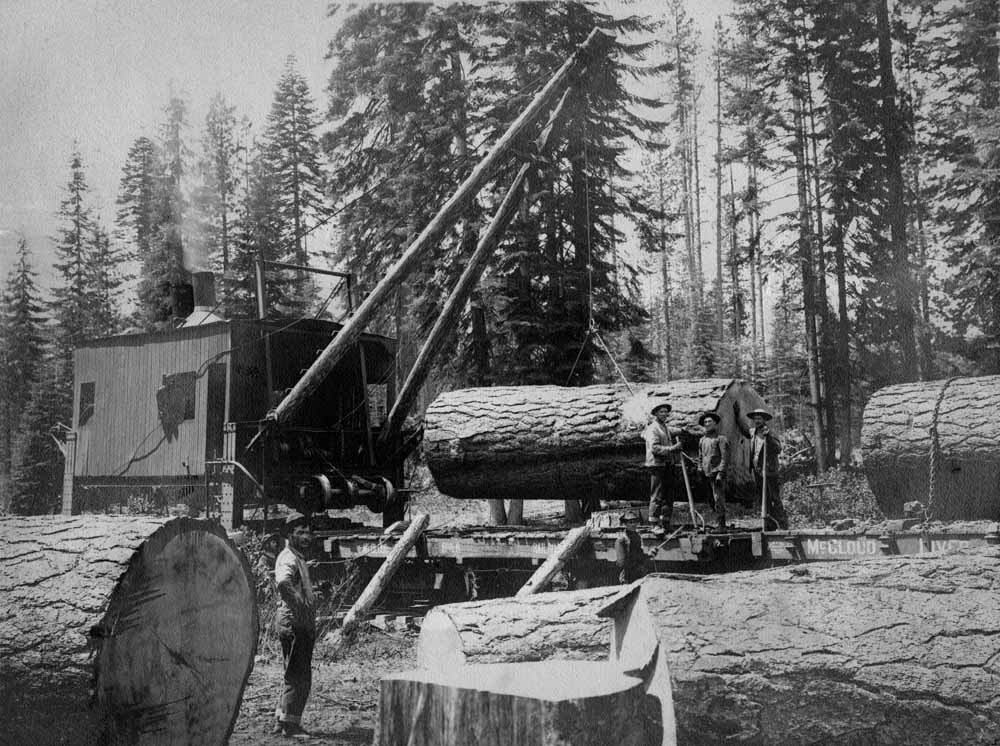 |
|
One of McCloud's first three McGiffert loaders at work not long after arrival. T.E. Glover collection. |
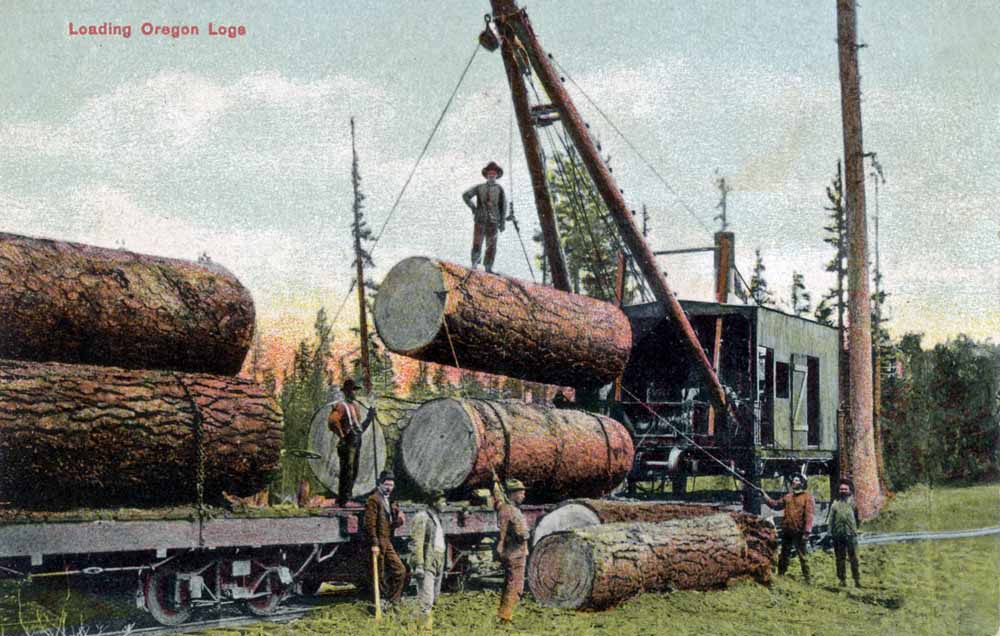 |
|
Despite the "Loading Oregon Logs" caption this is a colorized postcard of one of the early McGifferts at work. Postcard printers frequently committed these
kinds of geographical errors. Jeff Moore collection. |
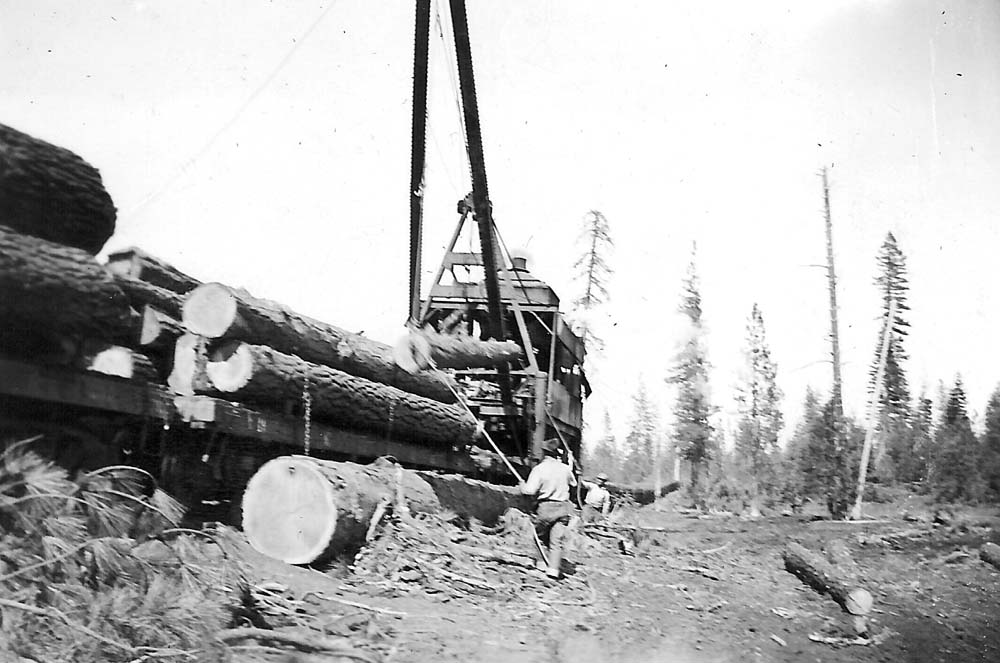 |
|
A later image of a McGiffert at work. Roland Edwards collection, courtesy Marilyn Rountree. |
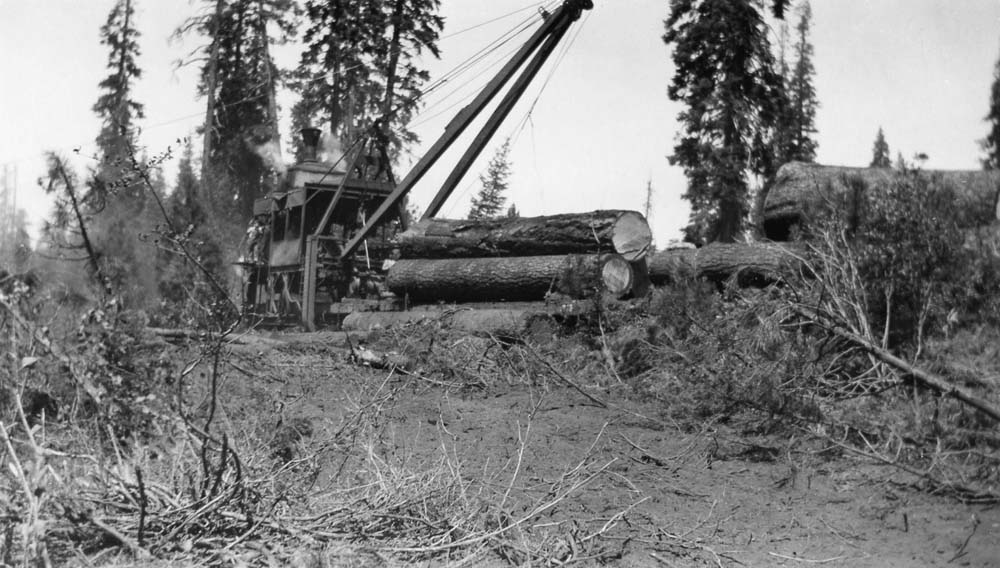 |
|
Another later shot of a McGiffert. Roland Edwards collection, courtesy Marilyn Rountree. |
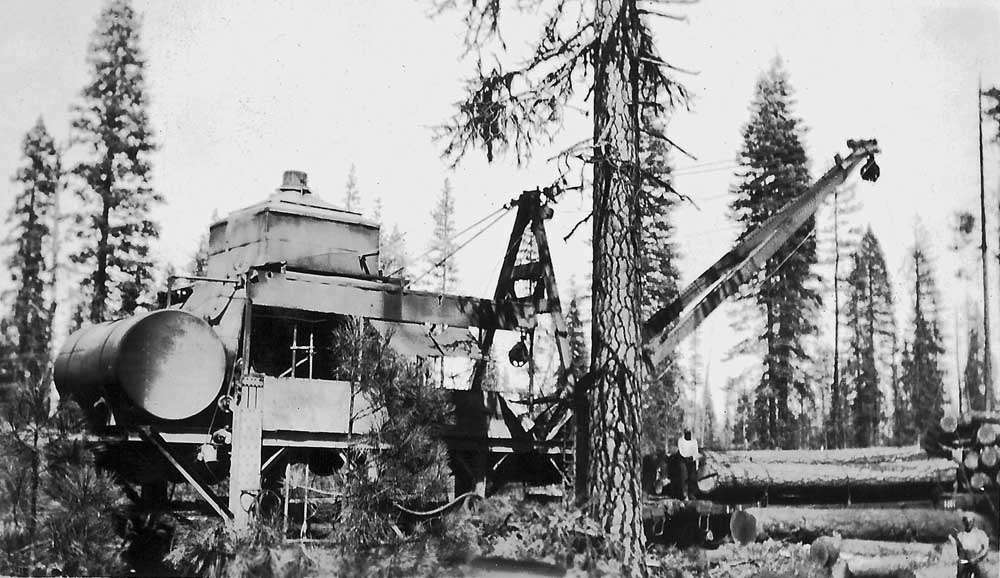 |
|
A McGiffert at work near White Horse in 1934. Roland Edwards collection, courtesy Marilyn Rountree. |
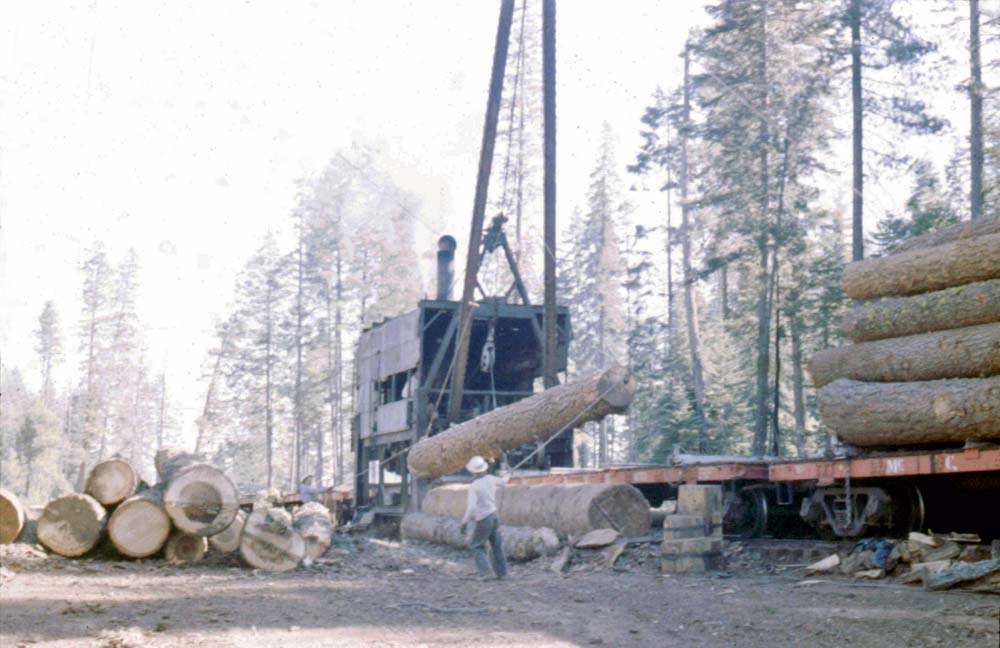 |
|
One last shot of a McGiffert, this one near Burney. Dennis Sullivan collection. |
|
|
|
Donkey Loaders- As noted in the Logging the McCloud Woods segment of this section, in 1910 the lumber company started equipping its donkeys with A-frame
booms that allowed them to load cars in addition to skidding logs. |
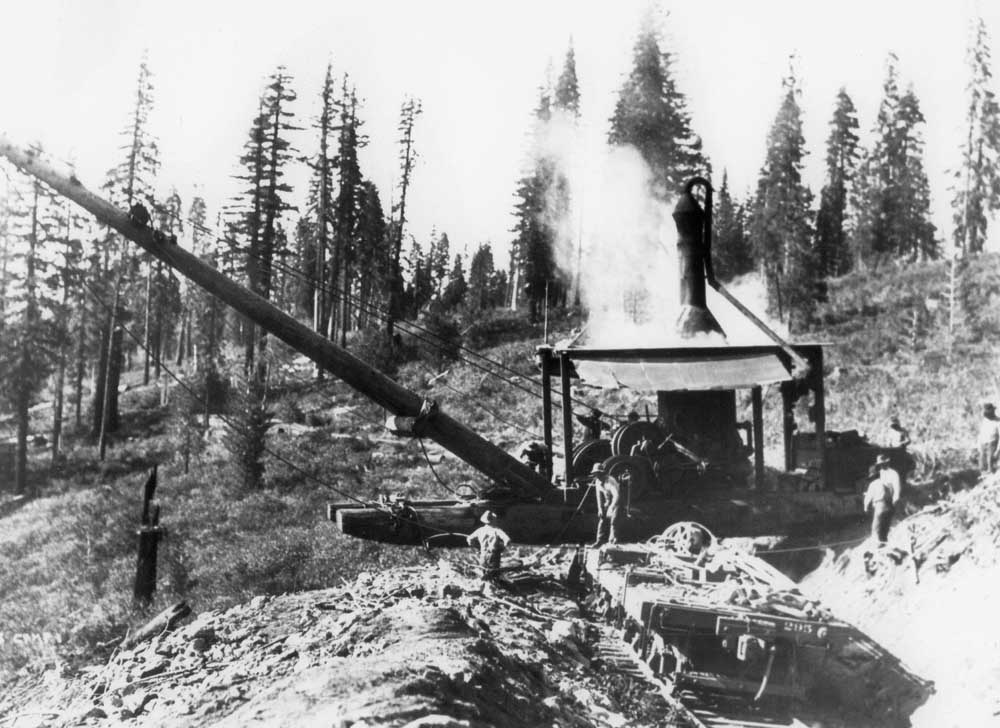 |
|
A donkey loader being placed on flatcars for movement to a new setting. Jeff Moore collection. |
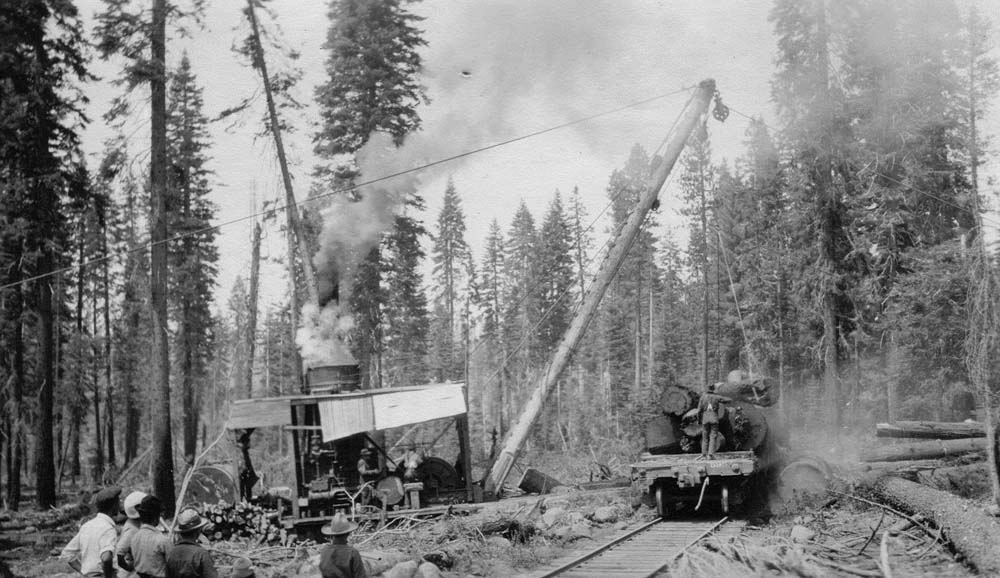 |
|
A broadside view of a donkey loader at work. Heritage Junction Museum. |
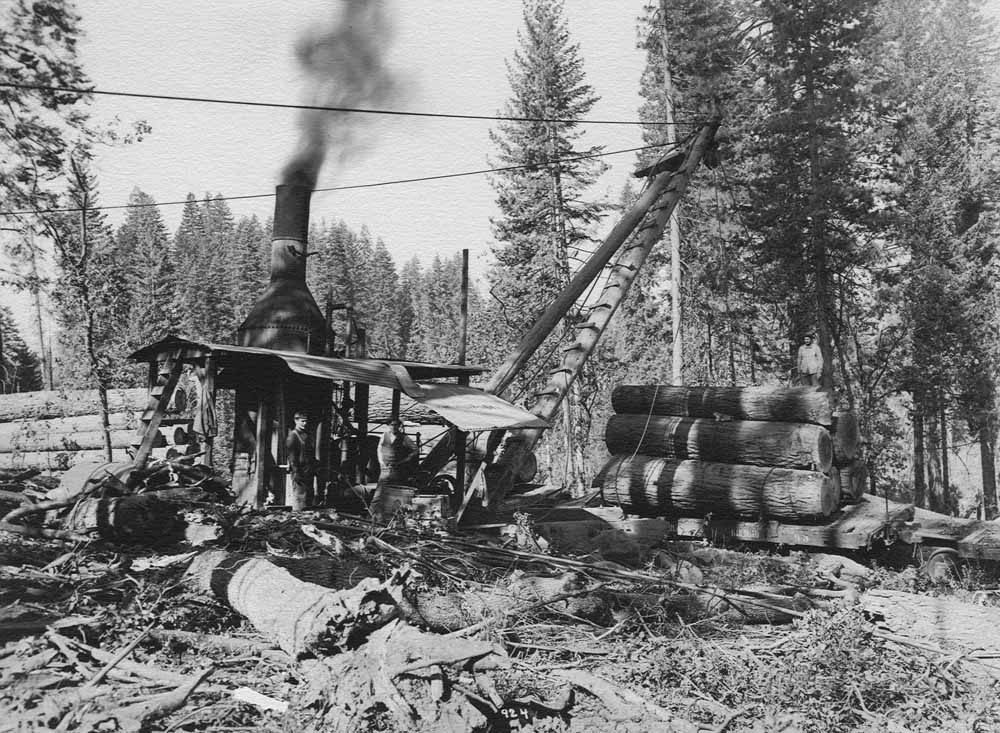 |
|
A rear view of a donkey loader. Heritage Junction Museum. |
|
|
|
Other Loaders. In addition to the methods described above, the lumber company also made extensive use of its Brownhoist cranes #15 and #16- for example, in 1928
the #15 loaded 15,112,580 board feet, while the #16 loaded 14,776,255 board feet. Then, around 1955 the lumber company mounted an American shovel loader on a tripod over the tracks at the log reload
southeast of Burney, where it worked until the end of the rail logging era. |
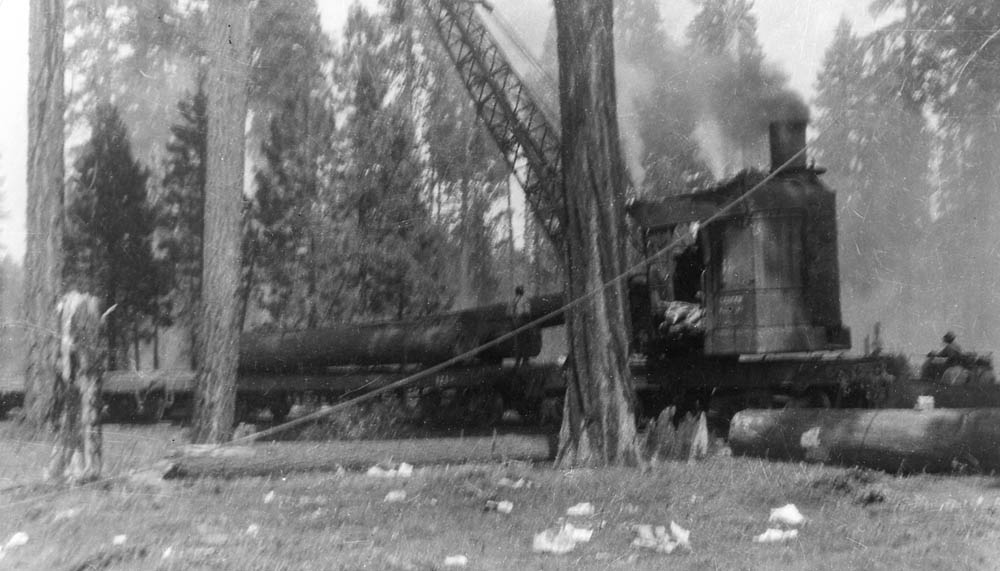 |
|
Crane 15 loading logs. Roland Edwards collection, courtesy Marilyn Rountree. |
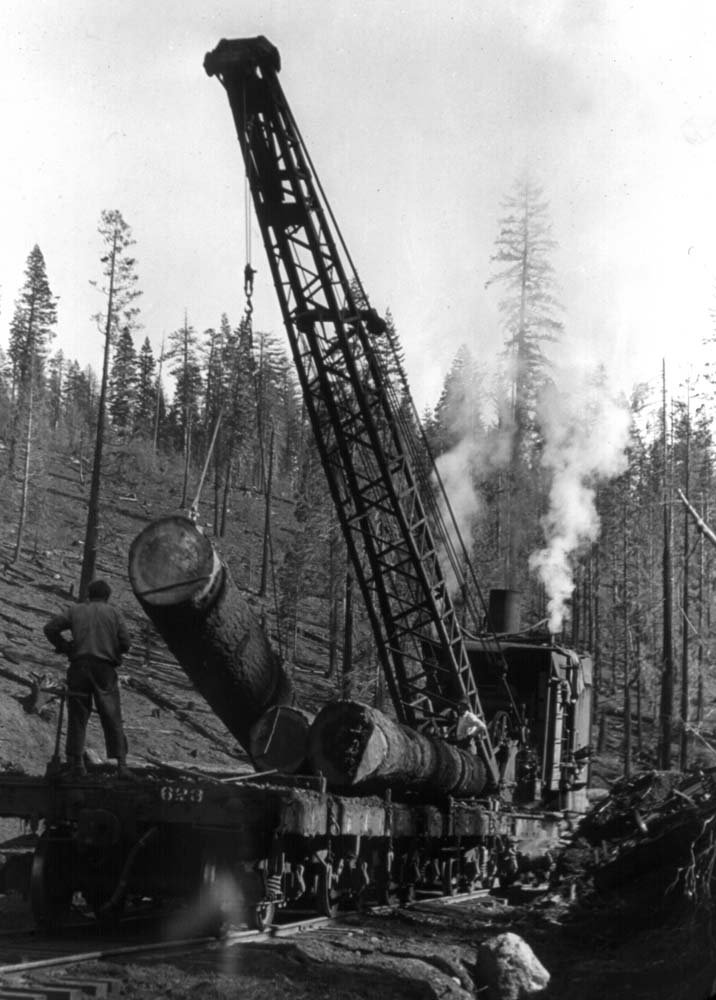 |
|
Another shot of the #15 loading long logs across short log flats. Heritage Junction Museum. |
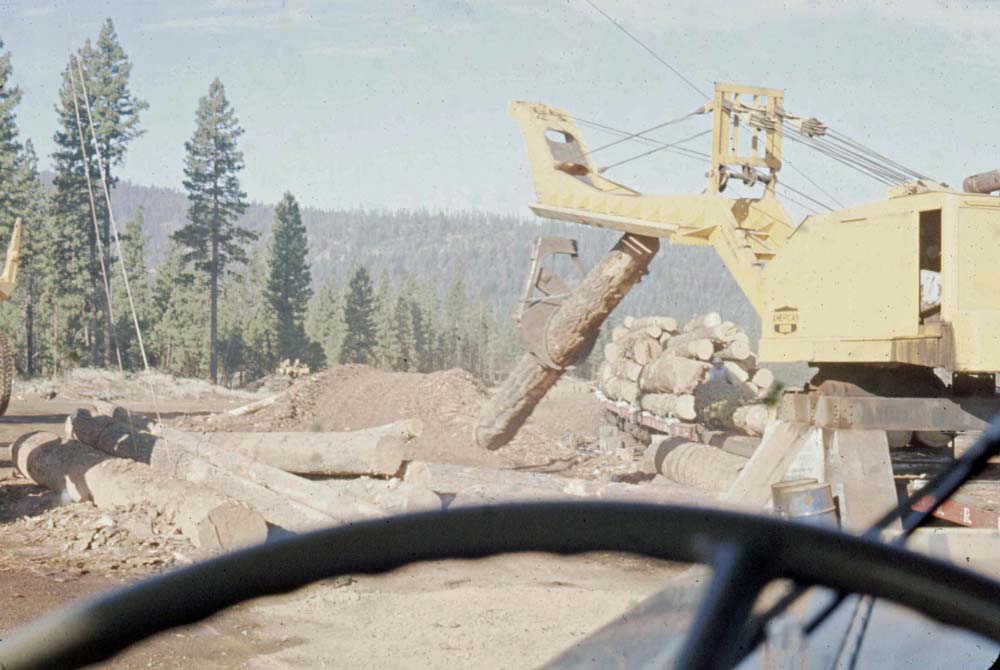 |
|
The American loader in Burney as seen from the driver's seat of a log truck. Dennis Sullivan collection. |
|
|